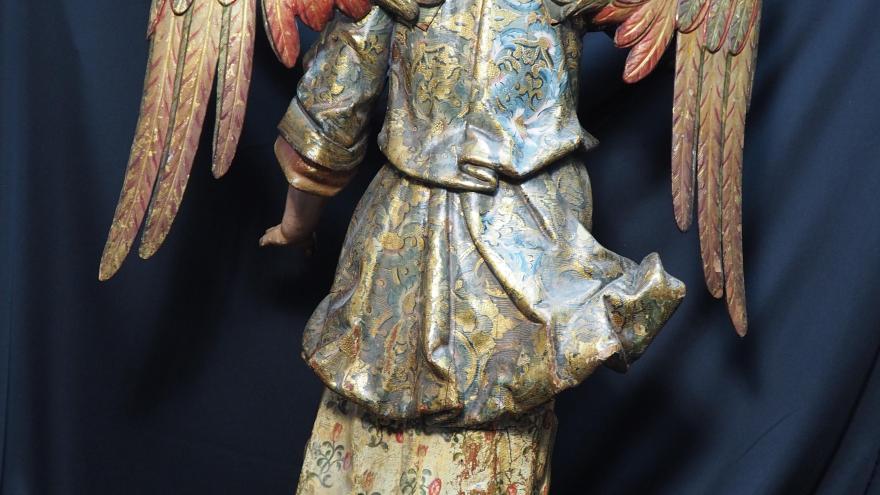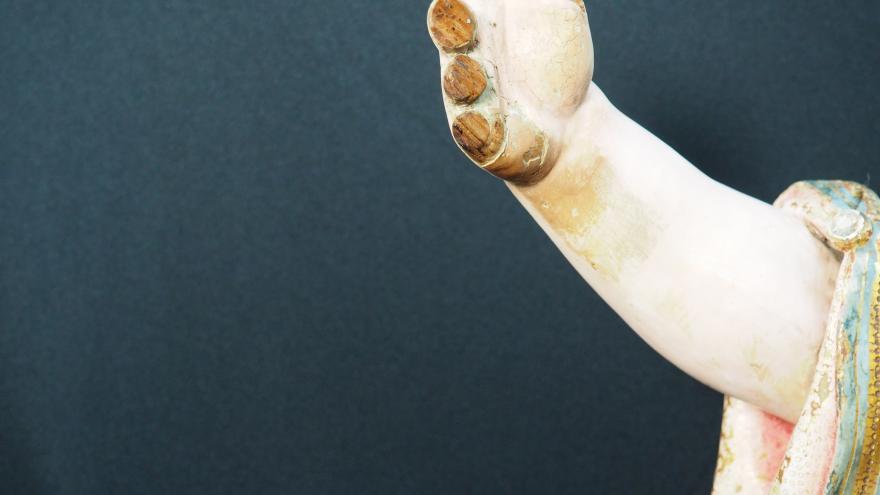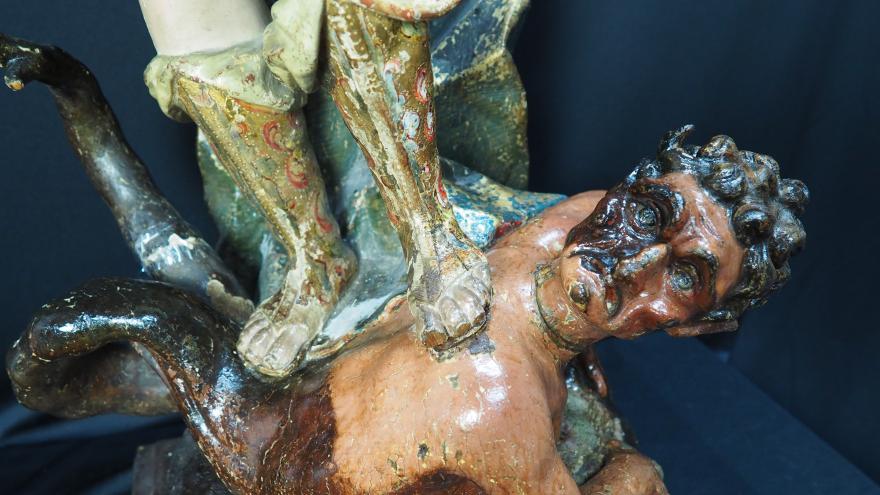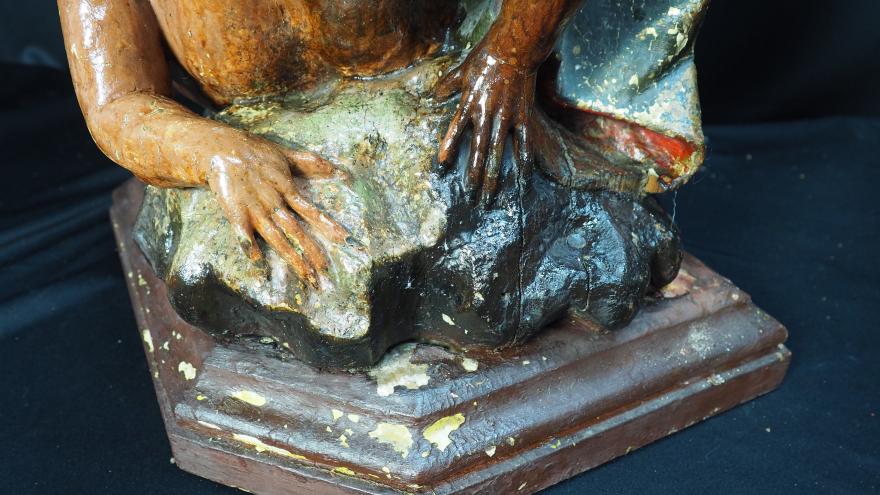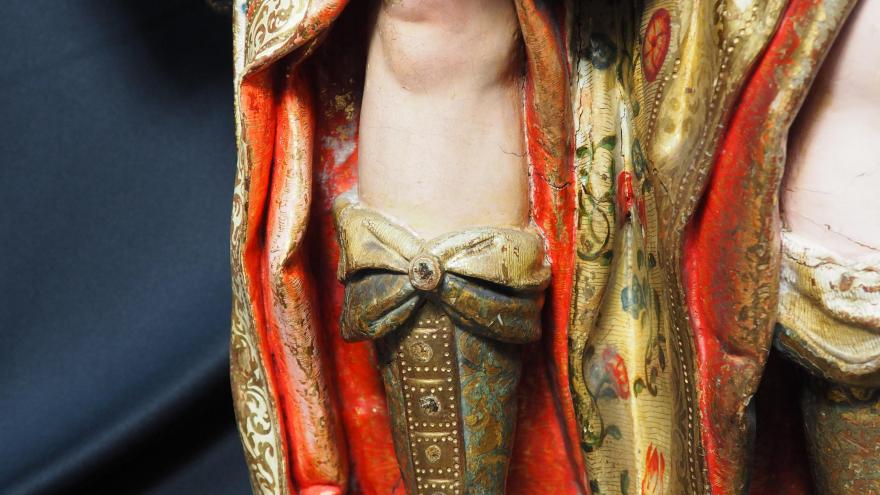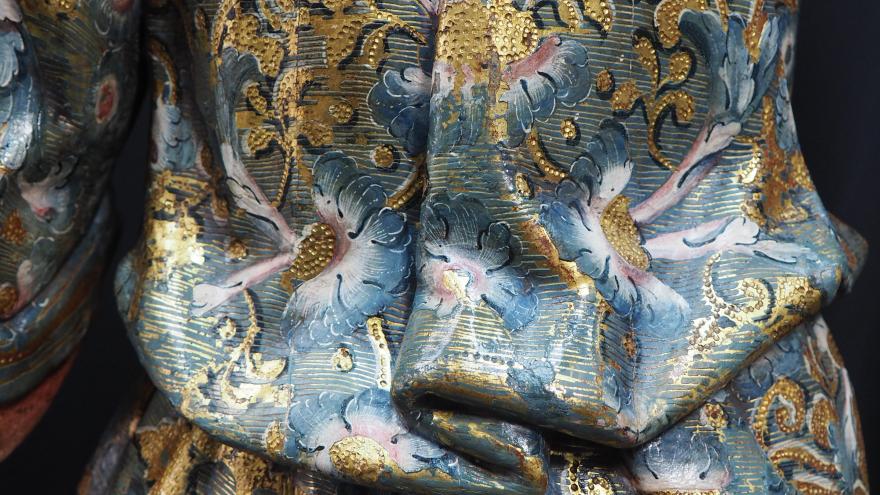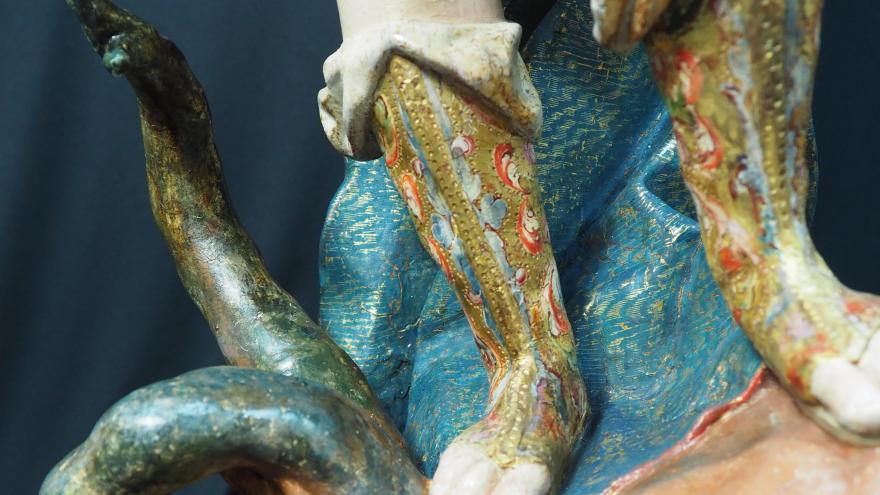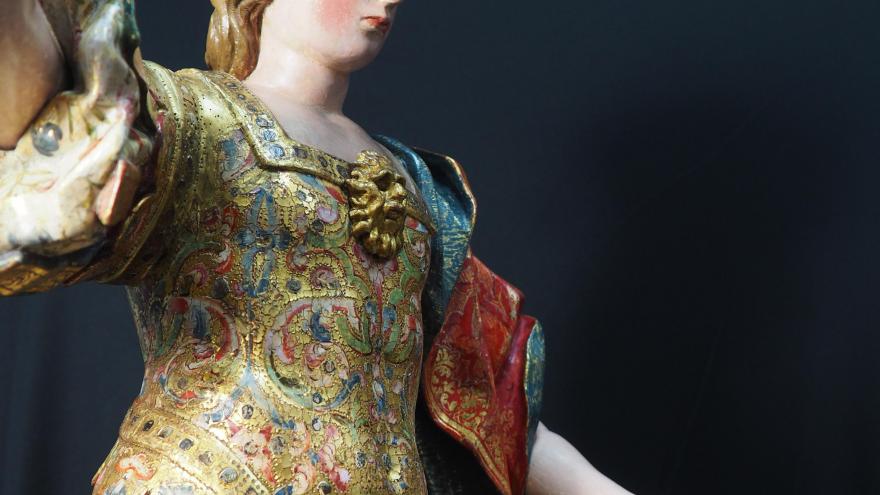

Restoration of the sculptural group attributed to La Roldana from the Convent of the Mercedarian Mothers of Juan de Alarcón
17th-century sculptural group representing Saint Raphael the Archangel and Saint Michael the Archangel
The sculptures of San Rafael Arcángel and San Miguel Arcángel are two documented works belonging to the Convent of the Mercedarian Mothers of the Immaculate Conception (Don Juan de Alarcón) in Madrid, declared an Asset of Cultural Interest by Decree 6/2014, of January 23.
The works seem to gather the formal, sculptural and pictorial characteristics of Luisa Roldán, known as La Roldana, (1652-1706), although the definitive attribution is pending. The two sculptures are part of a possible donation as a dowry for a novice or a parishioner.
The Sevillian sculptor Luisa Roldán grew up watching her father, Pedro Roldán, a famous Sevillian sculptor, work, inheriting the basis of his technique and mastery, although La Roldana developed her own style that she perfected throughout her career in Seville, Madrid and Cádiz . It was after her period in Cádiz when her style evolved towards greater expressiveness and naturalness in the figures.
The sculptures
Sculpture of San Rafael Arcángel after the intervention
Sculpture of Saint Michael the Archangel after the intervention
Sculpture of Saint Raphael the Archangel (0,93 x 0,70 x 0,36 m)
Polychrome, gilded and stewed wood carving
The archangel is represented wearing rich clothing consisting of a long tunic that exposes the legs on the front. He wears boots and sits on a throne of clouds. The wings, free-standing pieces, are anchored to the figure by two thick screws. In the area of the shoulder blades, the figure presents a recess with an inserted forging piece, which allows the correct anchoring of the wings in place with the fastening of the screws. As for the polychromy, reds and greens predominate, it includes floral decoration on the fabrics and two types of stews: gold in the figure and plant in the clouds that support it.
The figure of the archangel San Rafael, presents all the formal characteristics typical of La Roldana, comparable with many of his works, such as the treatment of the fabrics, with a proliferation of floral motifs; the blasting, with its characteristic movement backwards and the features with sweet and melancholic features surrounded by wavy hair carved back, leaving the face free.
The hands are thin and long, with agile fingers slightly separated with the appearance of initiating movement; decoration typical of Sevillian Baroque sculpture, with a proliferation of floral motifs in green and red. The care in the folds of the clothing, gathered up with a sash, providing grace and movement to the folds and, finally, the formal disposition of the figure, with the tendency to open her arms, the right one raised to her right, and the left downwards to the left, are recurring characteristics in the Baroque, tending to open spaces and break the excessive vertical line of the compositions.
Sculpture of Saint Michael the Archangel (0,88 x 0,57 x 0,30 m)
Polychrome, gilded and stewed wood carving
The archangel is standing facing forward, looking slightly down and to the right, with his right arm raised grasping a sword that has lost its blade. On his left arm he carries the shield with the archangel's motto: «Quid sicut Deus». He dresses in the style of Roman soldiers, with a cuirass on the chest and a skirt and, attached to the left shoulder, a cape that unfolds at the back in shades of green and red. He sits on the devil, a red figure with a masculine body and a pointed tail that rests on a rocky surface. The archangel presents soft and fine features, with a serious and somewhat inexpressive gesture.
The wings, sword and shield are free-standing elements, reds and greens predominating in polychromy, with geometric and floral decoration and abundant stews.
State of conservation
The state of conservation of the sculpture of the Archangel Saint Raphael It was deficient, showing damage and deterioration throughout its structure that made it difficult to correctly read the work. The right hand suffered a total loss of the fingers, except for small potions of the upper phalanges. A large longitudinal crack ran through the figure, from the cloud support to the neck on the obverse, the result of time and contraction of the wood. As for the polychromy, the work presented numerous losses due to the passage of time and the movement of the wood, especially in the folds and blasting of the carving. The back was badly damaged with extensive erosions on the white and flowery embossing on the back of the tunic, with structural cracks and no previous repainting.
Regarding the conservation of the sculpture of the archangel michael, it should be noted that he had lost several parts: in the left hand he presented a complete absence of the thumb and the heart; the index finger retained the first two phalanges and the ring finger the first. The little finger, although very deteriorated, kept its original support. Also missing was the tip of the toe of the right foot, the tip of the helmet's mask, and the blade of the sword.
Among the free parts, there was deterioration on the outer edges of the wings in the area of the scapulars, which had lost the final feather; on the right wing and on the left wing, which indicates that the deterioration would have been caused by a mechanical action caused by a human factor, when placing the wings. Also, within the group of free pieces, support losses were observed around the entire perimeter of the shield. The devil's head was split and with a tear around the entire perimeter of the neck.
The damage to the polychrome was very numerous and left the support visible on the entire sculptural surface. The piece presented generalized superficial dirt in the form of dust and an aggressive prior pictorial intervention, with some support grafting around the support foot and repainting and polychrome of all the carnations, as well as the rocky area together with the figure of the devil. . It had a dark and greasy glaze to hide the deterioration and a general varnish over accumulated dirt.
Restoration of the works
The following interventions have been carried out:
- Consolidation in situ of the pictorial layer prior to packaging and transfer, to avoid pictorial losses in the most problematic areas of the sculptures.
- Stratigraphic analysis of the pictorial layer.
- As a preventive measure, to ensure the perfect preservation of the piece and its durability over time, the sculpture is subjected to a anoxia disinfection process in order to eliminate possible xylophagous colonies, if any.
- surface cleaning by mechanical means to remove adhering dirt with soft-hair brushes and a vacuum cleaner. In the case of San Rafael, the most abundant deposits of dust and surface dirt were found, above all, at the base and in the folds. Before any other intervention, solubility and cleaning tests were carried out with the appropriate products.
- The consolidation of the pictorial layer of San Rafael has meant the elimination of the initial emergency fixing, since it was carried out superficially to avoid involuntary detachments during the transfer. All sculpture in general has needed careful consolidation to restore cohesion to the layers of polychrome.
- Chemical cleaning To remove deposited strata, such as oxidized varnishes, repainting or encrusted dirt.
- Sealing of cracks, gluing and volumetric reintegration of various areas of the blasting of the garments and the base. The stucco and unstucco with material analogous to the original, together with the pictorial reintegration and the final varnishing, have contributed to a visual finish analogous to the original, contributing to the protection of the works.
With these interventions, two extraordinary pieces of our cultural heritage have been recovered.





